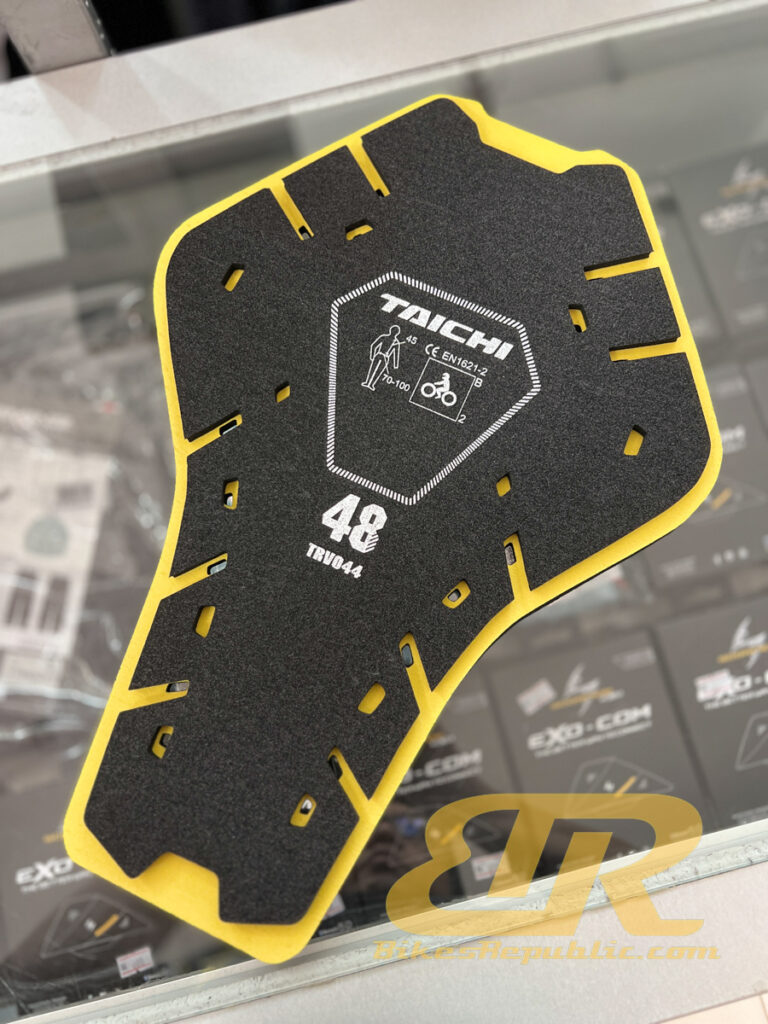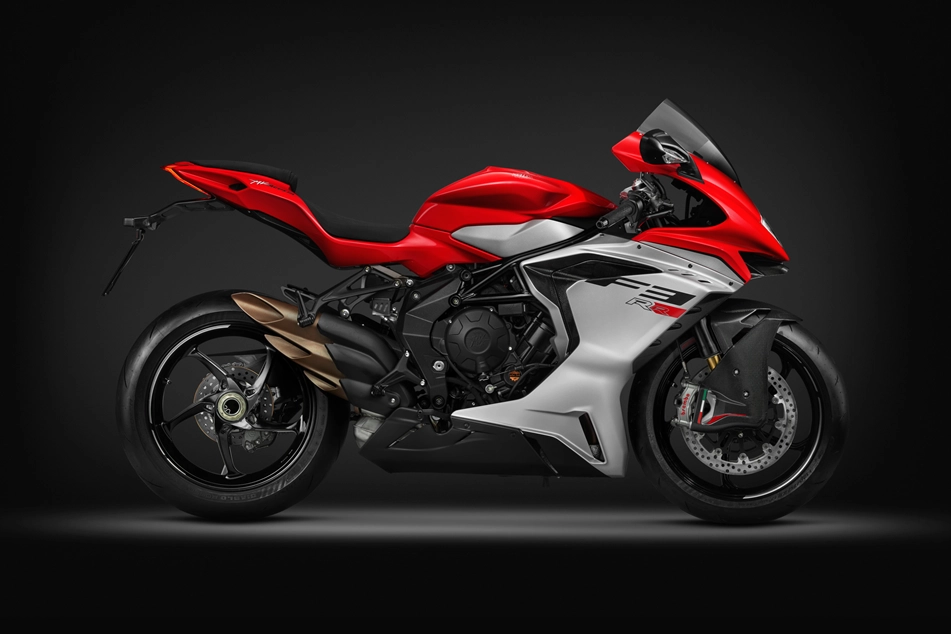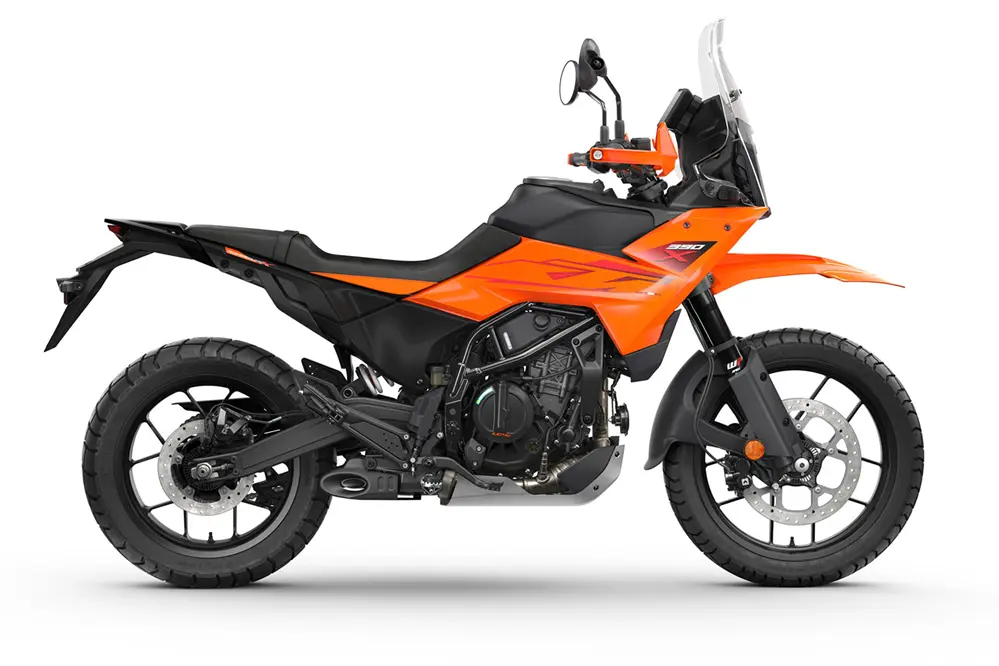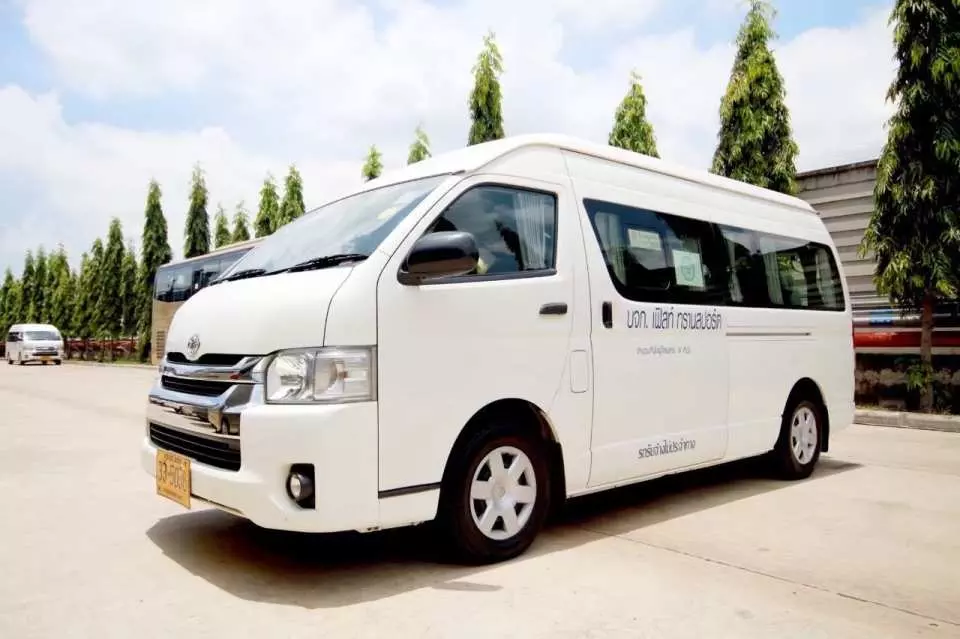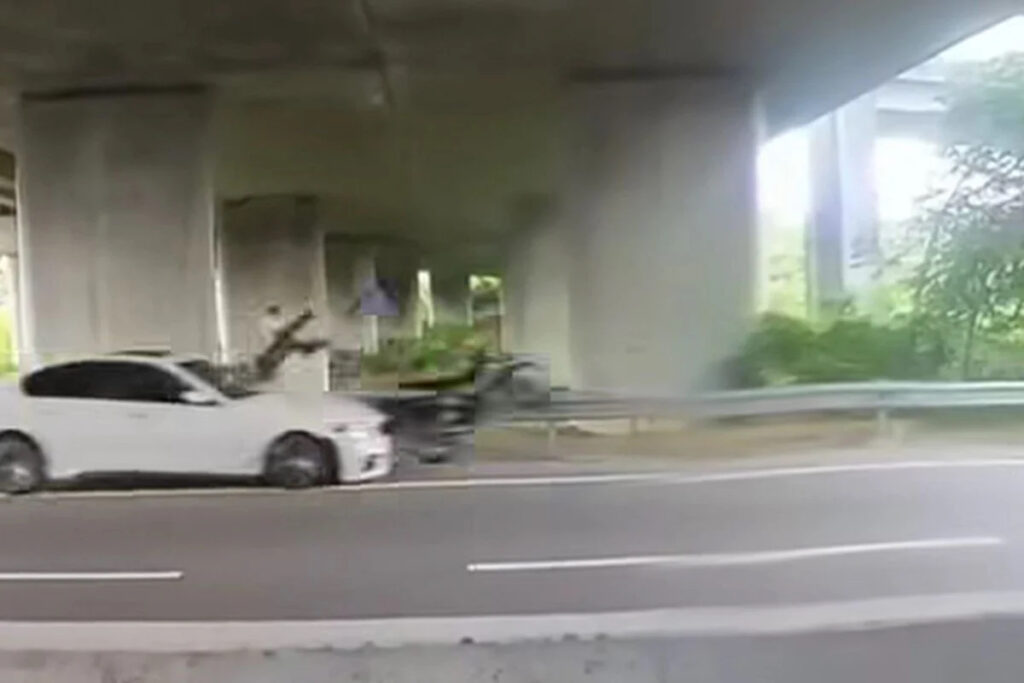The 2025 Yamaha YZF-R1 and the higher spec’ed YZF-R1M were launched for the U.S. and other international markets. Unfortunately for those in the EU, they will only receive the race-only model.
It features revised bodywork and huge front winglets, plus many other upgrades. Here are the list of features from the press release.
2025 Yamaha YZF-R1
Created to represent the pinnacle of sportbike performance, Yamaha’s iconic R1 returns for 2025 with the same explosive 998cc CP4 crossplane engine, comprehensive electronics suite and renowned handling character which has led to an incredible run of AMA/MotoAmerica Superbike titles in 13 of the past 14 seasons. Yamaha continues to use knowledge gained from high-level competition to offer some of the most advanced and capable Supersport models in the industry.
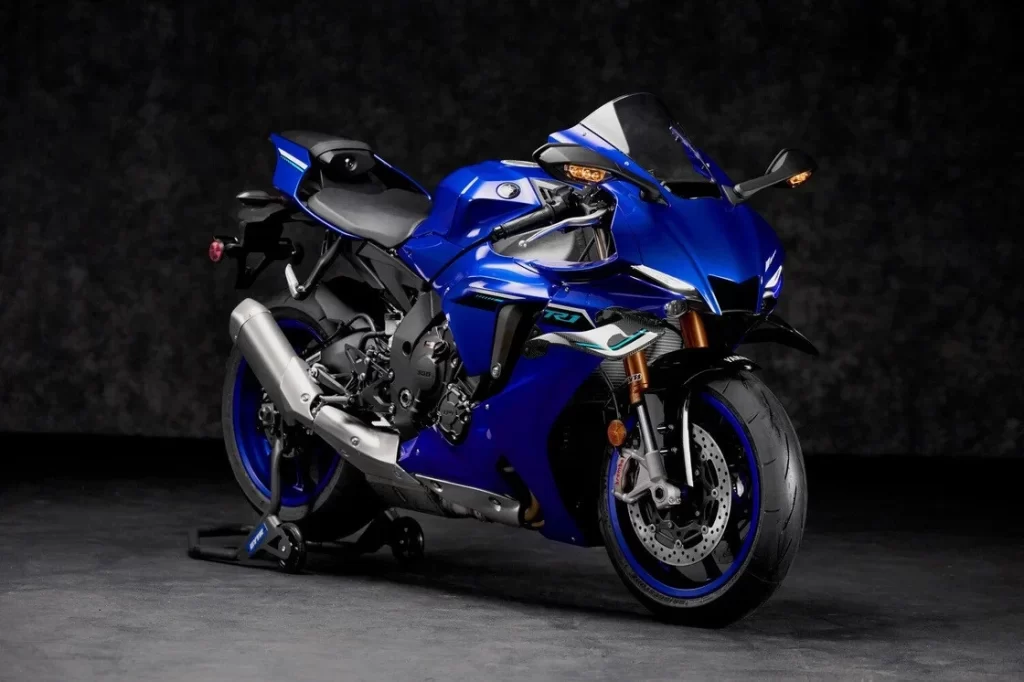
New features for 2025 begin with lightweight Brembo® Stylema monobloc front brake calipers. They come paired with a new Brembo® master cylinder to offer outstanding braking power and exceptional feel. There is also a fully redesigned KYB® front fork offering excellent response, road feel and chassis performance. The new carbon fiber winglets not only add to the R1’s sleek, aerodynamic look, they create additional downforce for enhanced front-end feel when braking or cornering. Finally, a new rider and passenger seat cover texture balances both grip and ease of movement for a better sense of control and connection to the machine.
Highlights:
- New carbon fiber aerodynamic winglets.
- New fully adjustable 43mm KYB® front fork.
- New radial-mounted Brembo® Stylema monobloc front calipers.
- New Brembo® master cylinder.
- New seat cover texture.
- Advanced 998cc CP4 engine with crossplane crankshaft technology.
- Lightweight titanium connecting rods, titanium intake valves and forged pistons.
- Variable Yamaha Chip Controlled Intake (YCC-I®) System.
- Lightweight titanium muffler and heat shield.
- Compact, stacked 6-speed transmission with close-ratio gearing.
- Advanced assist and slipper clutch.
- Ride-by-wire Yamaha Chip Controlled Throttle (YCC-T®) System.
- Advanced, 4.2-inch full-color TFT display.
- Six-axis Inertial Measurement Unit (IMU).
- Lean-sensitive Brake Control (BC) System.
- Three-level Engine Brake Management (EBM) System.
- Four-level Power Delivery Mode (PWR).
- Lean-sensitive Traction Control (TCS).
- Four-level Slide Control System (SCS).
- Four-level Lift Control System (LIF).
- Three-level Launch Control System (LCS).
- Quick Shift System (QSS) with three settings.
- Slim, compact aluminum Deltabox frame.
- Fully adjustable KYB® rear shock.
- Lightweight aluminum alloy fuel tank.
- Premium 10-spoke cast magnesium wheels.
- High performance Bridgestone® RS11 tires.
- Full LED lighting.
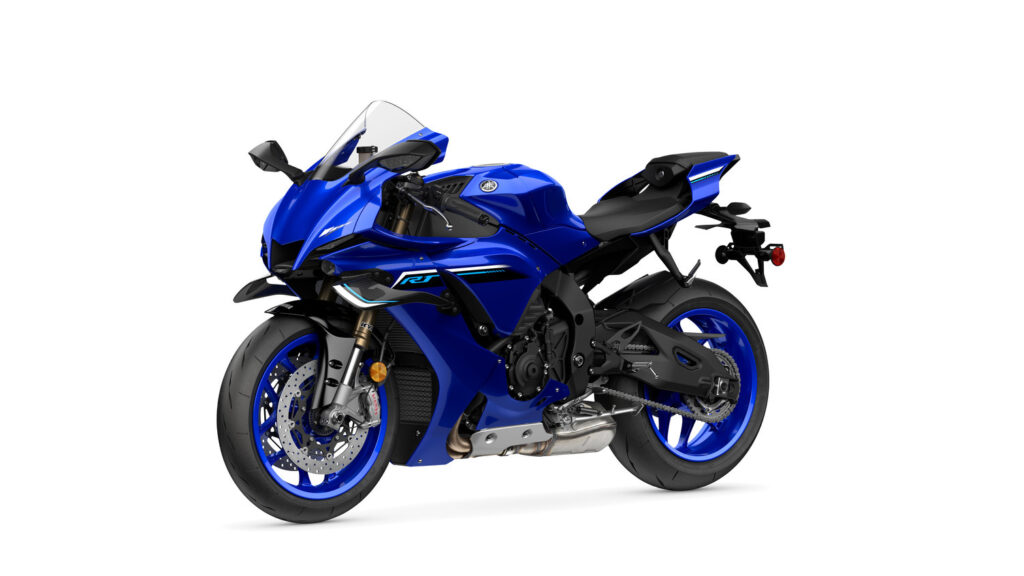
The new 2025 Yamaha YZF-R1 will be available in Team Yamaha Blue or Matte Raven Black, and will sell for US$18,999 (RM79,406.05).
2025 Yamaha YZF-R1M
Yamaha’s highest specification and most exclusive Supersport model, the 2025 YZF-R1M immediately sets itself apart with a distinctive color scheme, polished aluminum swingarm and striking full carbon fiber bodywork, which seamlessly integrates with the new carbon fiber winglets for an aggressive, track-focused look. An engraved, serial numbered badge further highlights its exclusivity.

Along with the same advanced performance provided by the powerful 998cc CP4 crossplane engine, comprehensive electronics suite and lightweight aluminum Deltabox frame found on the standard R1, capability is pushed to an even higher level on the R1M with the addition of its sophisticated Öhlins® Electronic Racing Suspension, where data from the motorcycle’s IMU—such as vehicle speed, lean angle, acceleration and brake pressure—is supplied to a dedicated Suspension Control Unit to rapidly adjust front and rear damping in real time for optimum suspension performance whether braking, cornering or accelerating. The ERS simplifies suspension tuning by providing streamlined dynamic tuning modes for both street and track, as well as manual modes for more conventional suspension tuning.
Additionally, GPS data logging comes as a standard feature on the YZF-R1M. Yamaha’s unique Communication Control Unit is an integrated data-logging and GPS system that puts factory superbike technology in the palm of your hand. Vehicle data can be recorded with course mapping and automatic lap timing managed by GPS, then wirelessly downloaded to an Android® or Apple® iOS® app where it can be analyzed. The rider is then able to adjust system settings and upload these changes back to the R1M for the next track session.
Highlights:
- Full carbon fiber bodywork including new aerodynamic winglets.
- New seat cover texture.
- Advanced 998cc CP4 engine with crossplane crankshaft technology.
- Lightweight titanium connecting rods, titanium intake valves and forged pistons.
- Variable Yamaha Chip Controlled Intake (YCC-I®) System.
- Lightweight titanium muffler and heat shield.
- Compact, stacked 6-speed transmission with close-ratio gearing.
- Advanced assist and slipper clutch.
- Ride-by-wire Yamaha Chip Controlled Throttle (YCC-T®) System.
- Six-axis Inertial Measurement Unit (IMU).
- Lean-sensitive Brake Control (BC) System.
- Three-level Engine Brake Management (EBM) System.
- Four-level Power Delivery Mode (PWR).
- Lean-sensitive Traction Control (TCS).
- Four-level Slide Control System (SCS).
- Four-level Lift Control System (LIF).
- Three-level Launch Control System (LCS).
- Integrated GPS data-logging enabled through Yamaha Communication Control Unit.
- Quick Shift System (QSS) with three settings.
- Slim, compact aluminum Deltabox frame.
- Dynamic Öhlins® Electronic Racing Suspension (ERS).
- Öhlins® gas-charged NPX fork.
- Radial-mounted 4-piston front brake calipers with braided stainless steel lines.
- Premium 10-spoke cast magnesium wheels.
- High performance Bridgestone® RS11 tires.
- Advanced, 4.2-inch full-color TFT display.
- Full LED lighting.
- Polished aluminum swingarm.
- Exclusive R1M color scheme.
The new 2025 Yamaha YZF-R1M will be available in Carbon Fiber and retails for for US$27,699 (RM115,778.07).






























